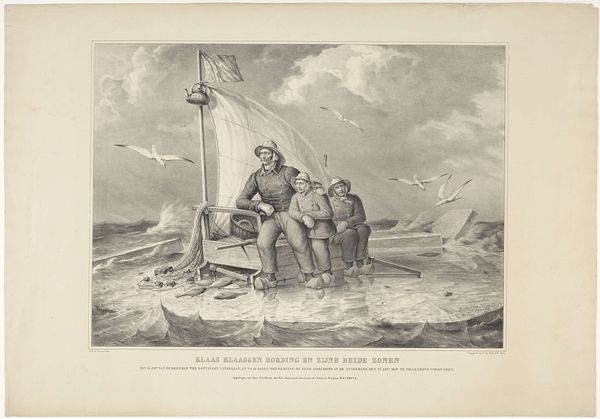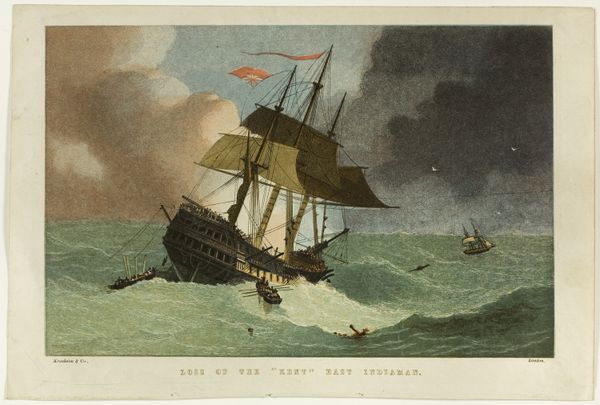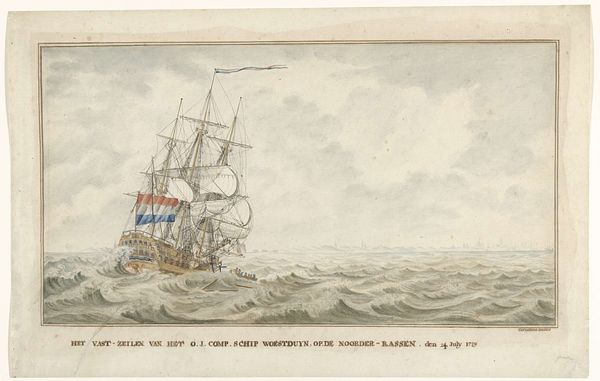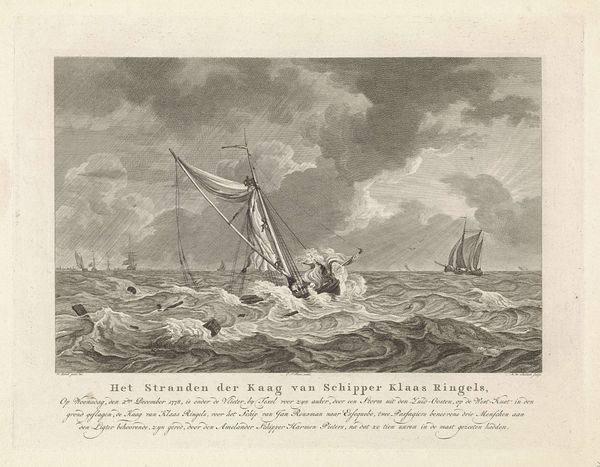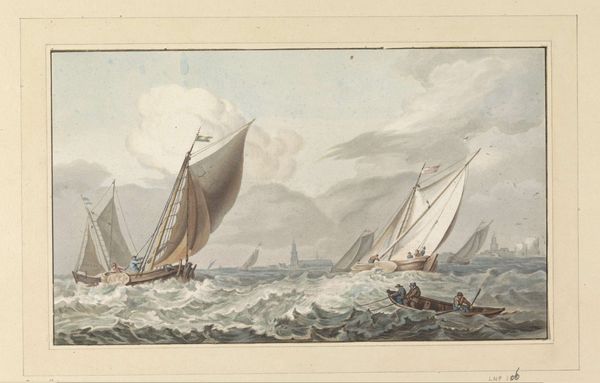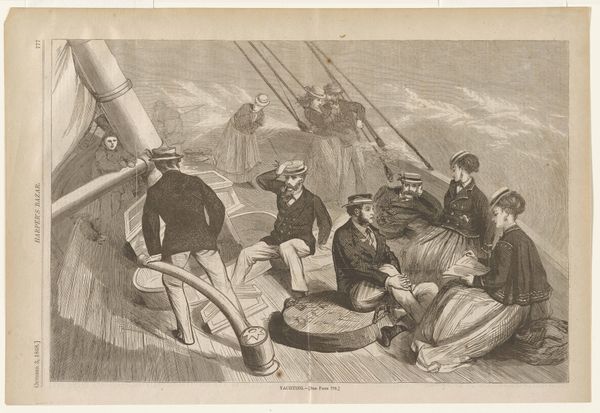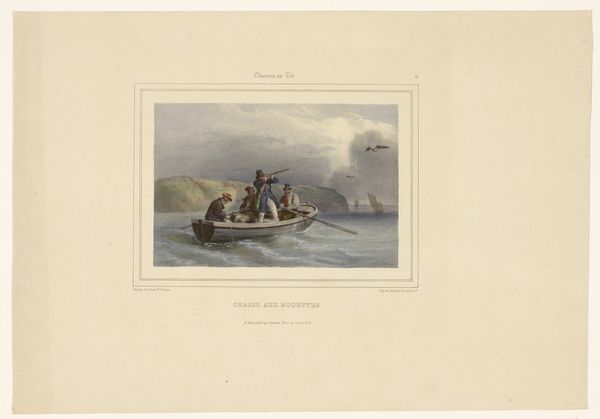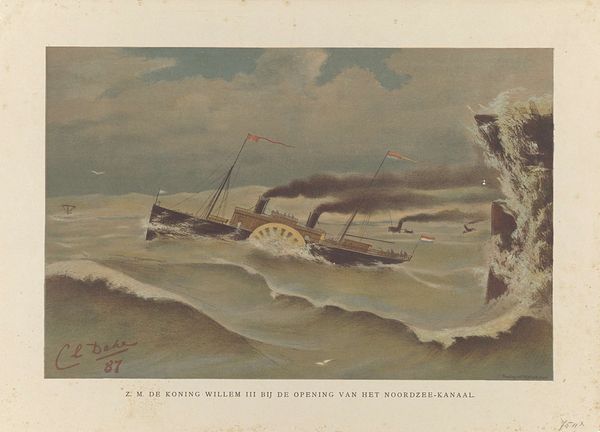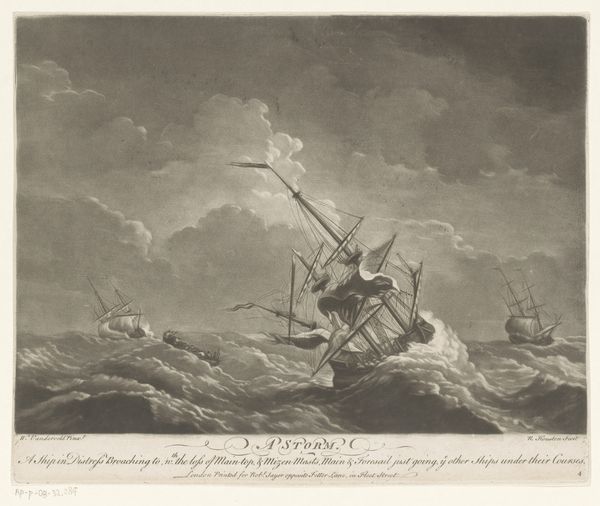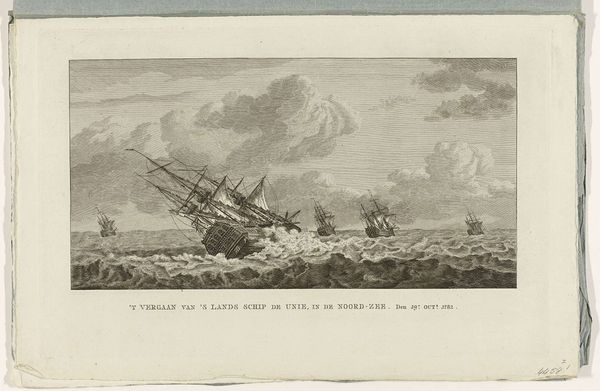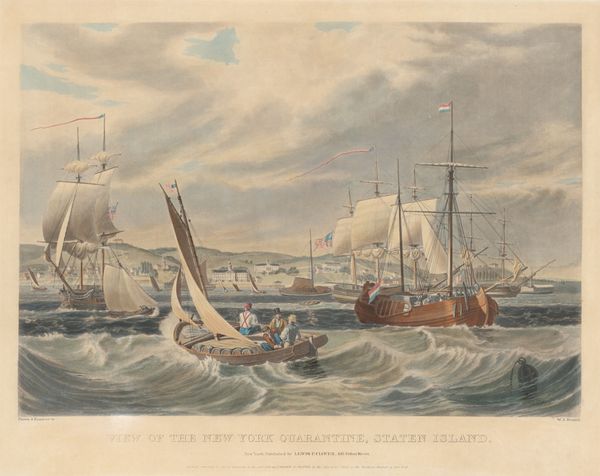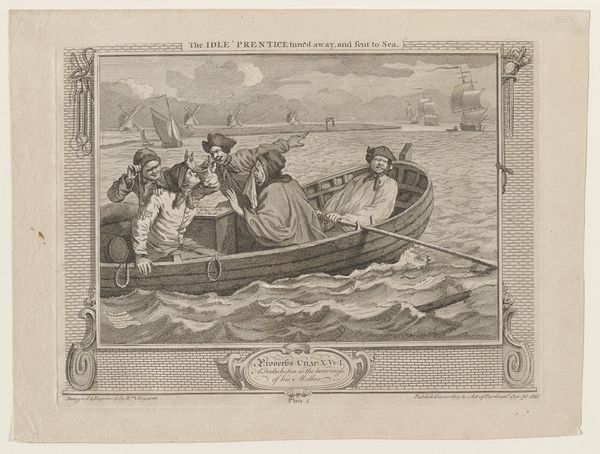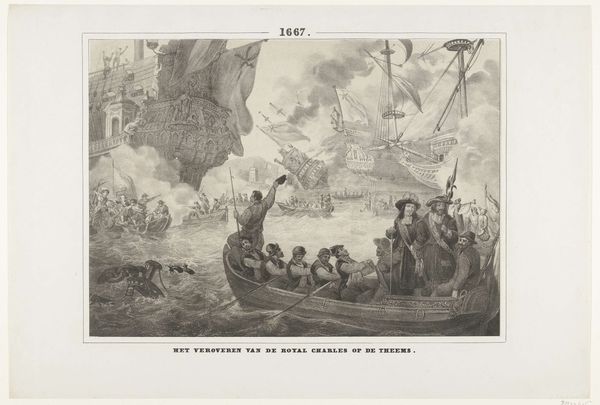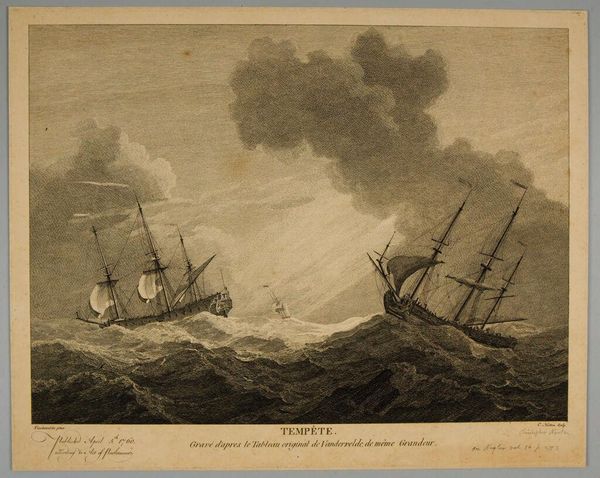
Klaas Klaassen Bording en zijne beide zonen den 13 Jan.ij van Durgerdam ter botvangst uitgegaan, en na 14 dagen omzwerving op eene ijsschots in de Zuiderzee den 27 Jan,ij 1849 te Vollenhove opgenomen 1849
0:00
0:00
painting, print, watercolor
#
narrative-art
#
painting
# print
#
landscape
#
figuration
#
watercolor
#
historical fashion
#
romanticism
#
19th century
#
watercolour illustration
#
genre-painting
Dimensions: height 570 mm, width 835 mm
Copyright: Rijks Museum: Open Domain
Editor: This is "Klaas Klaassen Bording and his two sons," a watercolor from 1849 by Jacob Plügger. What strikes me is how bleak and hopeless the scene feels; they're stranded on a tiny ice floe in a stormy sea. How do you interpret the imagery in this piece? Curator: The imagery is indeed powerful. The ice floe itself becomes a potent symbol. Ice is fragile and unstable, much like human life facing the unpredictable forces of nature. Notice how the Dutch flag, normally a symbol of national pride and security, is tattered. What does that suggest to you? Editor: It's like the failure of the state, almost. Like they've been abandoned. The father looks resigned, doesn’t he? Curator: Precisely. His resignation embodies a specific kind of stoicism found in maritime cultures, a face to face encounter with the reality and brutality of nature. What about the seagulls? Are they just decoration or something more? Editor: They feel ominous, like they are waiting. Seagulls are scavengers... circling, anticipating something terrible. Curator: And what does that tell us about Plügger's message about humanity versus nature? How would someone in 1849 receive such an emotionally stirring image? Editor: It might feel like a cautionary tale. The painting carries the weight of a historical event; these figures were real people and they actually suffered through this! The work feels very immediate and relevant even today. Curator: You're right. The painting preserves their cultural memory and their struggle, which has clear resonance, given the ecological context we are facing today. It’s more than just a historical scene, it is a symbolic warning.
Comments
No comments
Be the first to comment and join the conversation on the ultimate creative platform.
